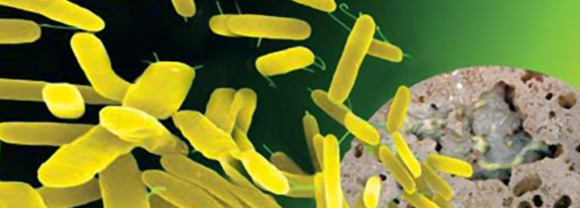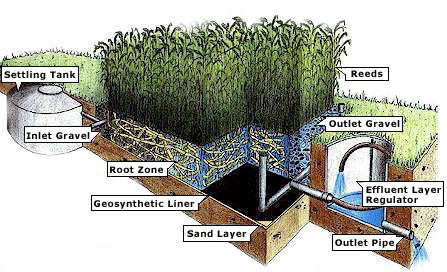
Abydoz has designed and constructed over 30 wastewater treatment systems using wetland technology.
Technology
Abydoz Engineered Wetland systems are based on technology developed in Germany by professor Dr. Reinhold Kickuth using sub-surface flow engineered wetland technology, known as the "reed bed" and the "root-zone" method. Dr. Kickuth has been recognized worldwide as the founding developer of sub-surface wetland systems.

The system works through specialized plants that transfer oxygen to their root system (rhizome) and thus into the soil matrix of the wetland. This allows aerobic microbial activity to flourish which is used to biologically and chemically break down contaminants. The soil, also called the pedosphere, is the meeting point of earth (geosphere), water (hydrosphere) and air (atmosphere). It represents our most complex ecosystem. 1 g of soil contains between 10 million and 100 billion organisms. Close to the roots of aquatic plants there are 10 to 100 billion organisms. Approximately 2,000 types of bacteria and some 10,000 types of fungi live in root-permeated soil that is charged with wastewater. In comparison, the activated sludge of a sewage treatment plant has approximately 600 types of bacteria. The possibilities for this ecotechnical method result from the performance and the set-up of the plants. They are oxygen-autonomous in the root section to a certain extent and supply the root-permeated soil with air and thus oxygen.
Aquatic plants, like reeds are able to supply roots and their adjacent areas with oxygen via a wide-meshed tissue, the so-called aerenchyma. Hence, in the soil, the reeds are not the purifying agent but the activating partner of the systems a catalyst, as shown by the high amount of soil organisms associated with marsh plants. The root mesh allows for the creation of oxic and anoxic soil sections, so that aerobic, anerobic and aereophile bacteria are able to exist and degrade contaminants.
The treatment area is designed as a stable, engineered ecosystem and is based on complex inter relationships between plants, soils and micro-organisms. Although very simple on the surface the interrelationships create a complex ecosystem.
